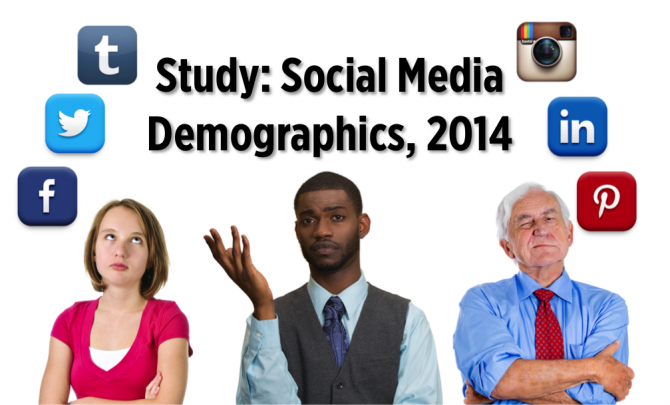A recent study from Business Insider illuminated social media demographics for 2014 across major sites and apps. Marketers and advertisers take note: things in the world of social aren’t quite the same as they used to be.
Social Media Demographics 2014
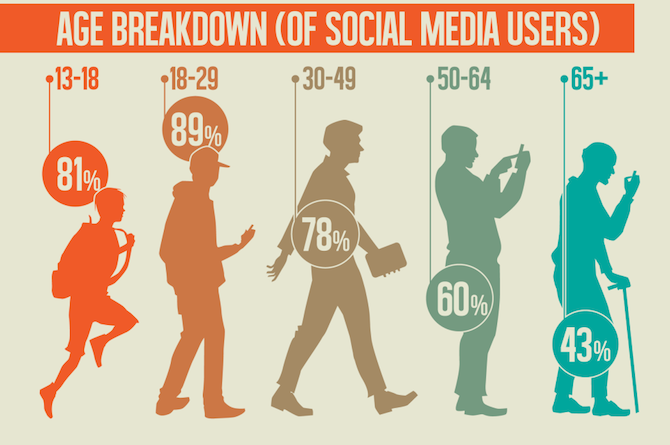
Social Media Demographics 2014 – Breakdown by age (image courtesy Mediabistro)
Anecdotally, it seems like every young person I speak to either “doesn’t use Facebook at all” anymore, or uses it in a severely reduced capacity (once your grandparents’ friends have adopted something, it is apparently no longer “cool”). But the actual numbers tell a different story, with Facebook’s audience still skewing very young–so young, in fact, that many luxury brands advertising on Facebook are seeing worse results there than from ads placed in magazines.
You remember magazines, right?
On the other hand, brands advertising low-consideration impulse purchases or driving app downloads are still showing phenomenal, cost-effective results on Facebook. As a result, a number of advertisers–particularly those who value CPI (Cost Per Install)–are using Facebook as their only digital strategy.
To those individuals, I’ll just say this: Facebook accounts for 17% of time spent on mobile (source: Flurry Analytics and Comscore). An admittedly huge share of user attention, but hardly the whole picture. At a certain point, an increasing ad presence on Facebook will see diminishing returns, cutting off other potential avenues for visibility and audience engagement.
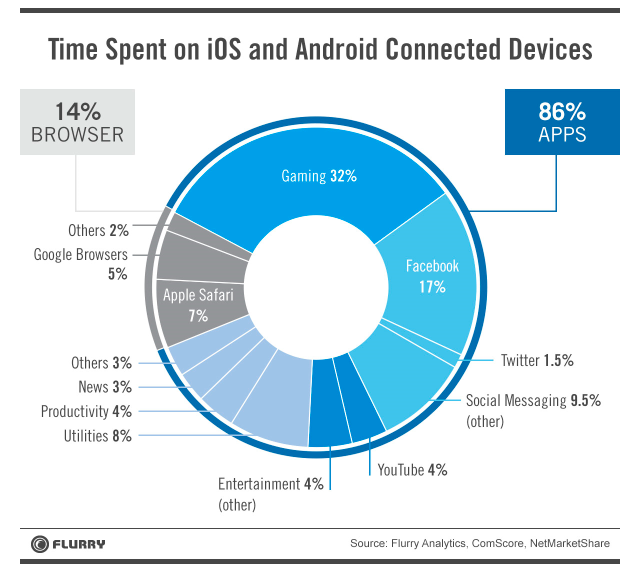
Social Media Demographics 2014 – Facebook dominates time spent on mobile (image courtesy Flurry Analytics)
Yet there’s no denying that Facebook is the alpha dog when it comes to time spent on mobile. Its 17% of the pie is a bigger slice than any other mobile resource–including mobile web browsers. It’s no surprise that Facebook just topped $200 billion in value, thanks to a huge influx of mobile advertising revenue.
One thing major brands should bear in mind about Facebook marketing: in the coming months, the social giant will be imposing stricter limits on total organic reach–meaning the biggest brand players on Facebook will have to start paying for all that exposure.
Twitter has become the world’s go-to source of snackable news content, with BI reporting that 83% of consumers have been getting news from Twitter as far back as 2012. Twitter’s demographics are based in urban areas, where the 140 character limit is a perfect fit with fast-paced lifestyles.
Twitter Best Practices: schedule high-priority tweets just after lunch, Monday-Thursday (1pm-3pm performs best). Once people start to slip into their more leisurely “weekend mode” after 3pm on Friday, Twitter engagement drops to its lowest point.
While once considered nothing more than a discovery point for job postings and resumes, the LinkedIn of 2014 has long-since become a social media marketing focal point for a number of different B2B and B2C brands. In terms of demographics, the user base is primarily white-collar and much more educated than on other social networks, with higher average discretionary income, to boot.
Reaching your audience on LinkedIn is all about coordinating posts around the natural rhythms of the workday, either hitting people right when they arrive in the morning and are settling into their day, or near the end of business hours–when they have wrapped up the day’s more pressing tasks and minds are beginning to wander.
Pinterest rules on tablets. With it’s more visual interface, it’s a naturally better fit on devices with larger screens, and as a result it accounts for practically 50% of all social media shared on iPads. The verticals dominating on Pinterest tend to skew towards more domestic themes: cooking, crafts, family, & parenting.
This is unsurprising, given the fact that tablet devices are still primarily used in the home as secondary screens for desktop and television. If you are marketing on Pinterest, think “tablet”–meaning older, higher-income demographics will be your biggest audience. In fact, a study from Mediabistro reported that 15x as many adults use Pinterest, compared to teenagers–making it the only social media channel where older users dramatically outnumbered younger demographics.
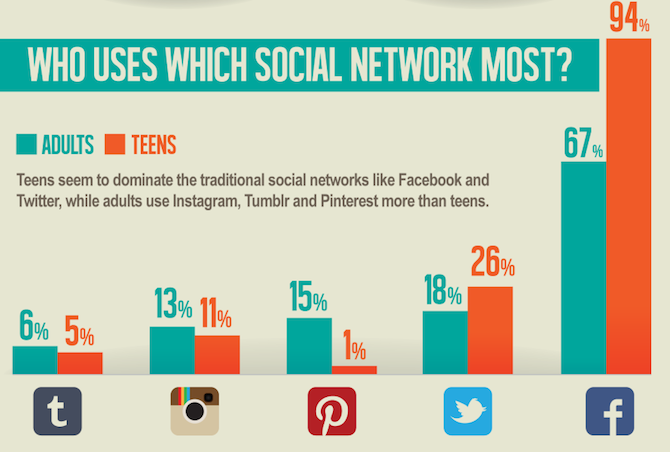
Social Media Demographics 2014 – Pinterest use skews heavily towards adults, unlike other major social sites (image courtesy Mediabistro).
BI reports that in 2014, 9 out of 10 Instagram users are under the age of 35, meaning brands hoping to market to older demographics there will be aiming at a very small target. But Instagram is still a natural fit for youthful, visual-centric verticals like apparel and entertainment.
Tumblr
Tumblr has the most dedicated users, which BI describes as “interested in self-expression.” A 2013 study performed by Posthaven co-founder Garry Tan found that, amongst younger demographics, a higher percentage use Tumblr “regularly” compared to Facebook.
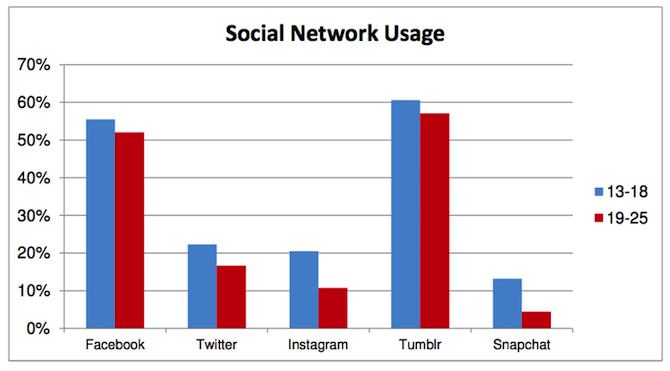
Social Media Demographics 2014 – Tumblr boasts more regular users than Facebook among younger demographics (image courtesy Garry Tan)
Female Dominance
While social media is obviously of major interest to both sexes, women account for a significantly higher percentage of social media use–about 15% higher, across every single venue in 2014. This ties into an overall better engagement females have with social media. In FunMobility’s recent study on Advertising to Millennials, we found that young women were much more interested in receiving ads through social sites than their male counterparts.

